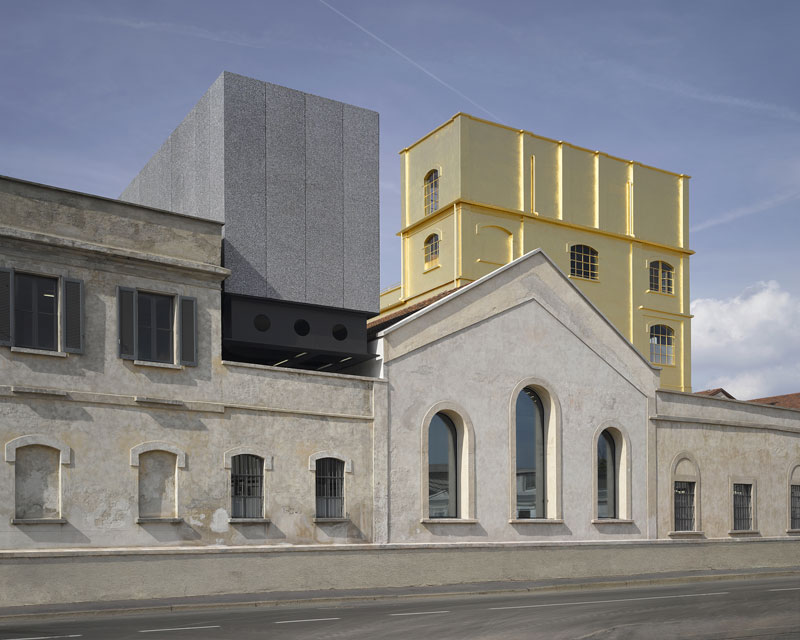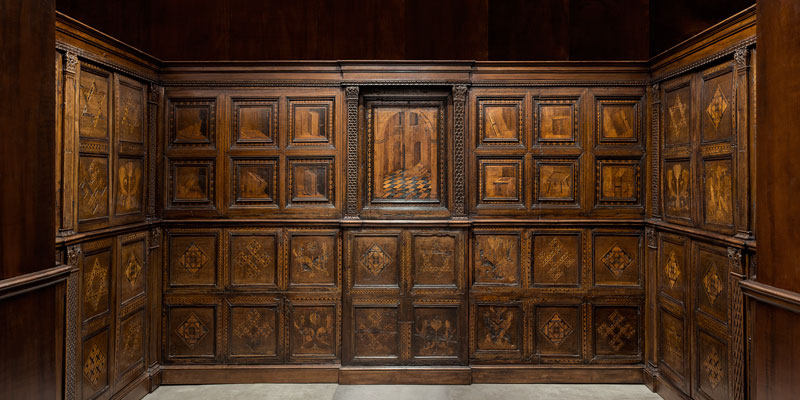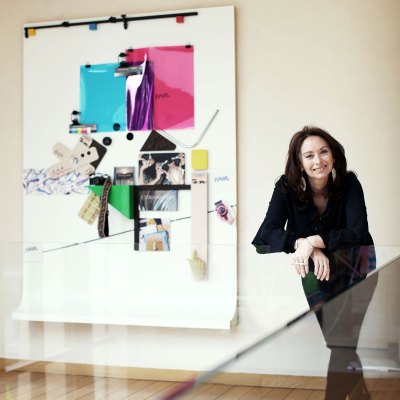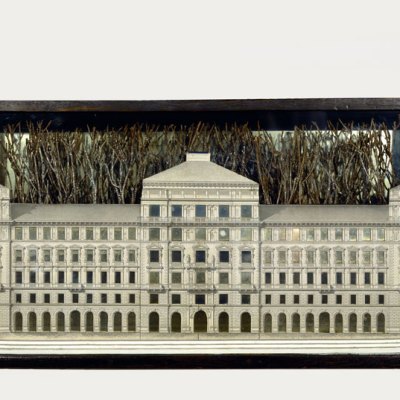The current shows at the Prada Foundations in Milan and Venice, ‘Serial Classic’ and ‘Portable Classic’, challenge our ideas about artistic originality. James Cahill spoke to Artistic Director Germano Celant, and classicist Salvatore Settis, co-curator of ‘Serial Classic’, about the galleries’ unusual classical and contemporary combinations
‘Serial Classic’ in the new Fondazione’s Podium space sets the modern and contemporary collections within a narrative that goes back to antiquity. What lay behind the decision to site an exhibition of classical art at the heart of the opening displays?
The decision to make a historical exhibition is due to our desire to emphasise that the institution, although private, has no intention of being an ‘ego-museum’ devoted to the collection of its founders, but aspires to function as a place for the study and analysis of artistic, aesthetic and cultural matters, whether of the past or the present. Its mission is to produce theoretical, systematic and expository interpretations, in which the focus is on the significance of a work from the perspective of art history and society, without limits of time or language.
Exterior view of the Fondazione Prada in Milan, designed by Rem Koolhaas and OMA, showing a pre-existing tower covered in 24-carat gold leaf. Courtesy Fondazione Prada. Photo © Bas Princen

Do you think the ways in which we look at contemporary and classical art are the same? Has classical art suffered from the idea that it offers an ideal of ‘beauty’ or ‘realism’?
The methodology has to be the same because figures are all subject to a gaze – a single one – that attempts to know and understand them. It is easier to approach the contemporary because it is an alter ego within which none of us finds it hard to find our double.
Antiquity is remote. It is no longer able to give material expression to the life of the present. Its beauty and its reality no longer correspond to the present day, and for this reason it is necessary to reconnect it to our thinking from a current perspective. In this sense the foundation has been linking image to idea and vice versa for decades, in order to be able to expand the range of its intervention beyond art and into architecture, cinema and photography, and it has plans to take on dance as well.
Exhibition view of ‘An Introduction’, with works by Luc Tuymans, Gastone Novelli, Salvatore Scarpitta, Enrico Castellani, Gerhard Richter, Günther Förg, Carla Accardi, Lucio Fontana, Llyn Foulkes, Alberto Burri, Emilio Vedova, William N.Copley, Antoni Tàpies, John Wesley, John Baldessari, Victor Vasarely, Giulio Turcato, Mario Schifano, Konrad Klapheck, Jan Schoonhoven. Fondazione Prada Milano 2015. Photo Attilio Maranzano. Courtesy Fondazione Prada

The displays in the Deposito section show how contemporary art might be inserted into older traditions – especially in the case of the Renaissance studiolo into which you have inserted modernist or contemporary works (by Cornell, Schwitters, or Francesco Vezzoli). Do you think that ‘tradition’ is still a useful concept for thinking about contemporary art and its intersections with history?
The study of tradition and the past is the basis for understanding the present. The reaction against the classical is a conservative one. It is an attempt to exalt an anti-historical perspective, seeking to make the importance of the things that lie at the root of contemporary research abstract. This is the thinking behind ‘An Introduction’ – a display that attempts to show the journey that the collection, and the people that have created it, have made. The aim is to tell a ‘story’ in images of the various stages of the process by which Miuccia Prada and Patrizio Bertelli ‘introduced’ themselves to art, culminating in the collection, the salon, or the picture gallery of works – and in the attention paid to young artists.
How do you plan to adapt or develop the spaces of the new foundation to show other aspects of the collections?
The idea is not to fixate on the use of the collection, but to make it available in the manner of a ‘library of things’ to be read and shown from different perspectives – developed through methods that, in addition to the history of art, might include anthropology, philosophy, politics, economics. The aim is to make the collection ‘manageable’ in order to lighten its ‘materiality’ and its value as property and turn it into a dramaturgy of thoughts and ideas.
Read James Cahill’s review of ‘Serial Classic’ (at Fondazione Prada, Milan until 24 August) and ‘Portable Classic’ (at Fondazione Prada, Venice until 13 September) in the July/August issue of Apollo. Buy the current issue here.
Related Articles
Fondazione Prada celebrates thousands of years of ‘unoriginal’ art



